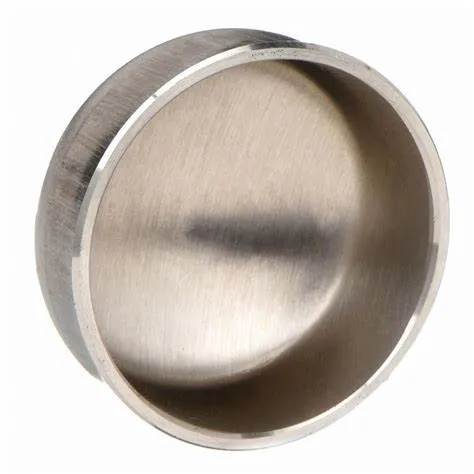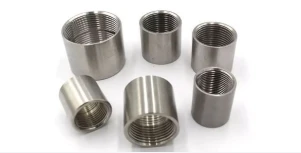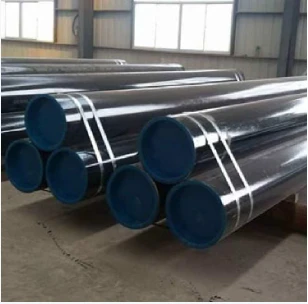JIS B2311 to japońska norma przemysłowa obejmująca złącza rurowe zgrzewane doczołowo, w tym zaślepki stosowane w instalacjach rurowych. Zaślepki do zgrzewania doczołowego służą do zamknięcia końca rury, zapewniając uszczelnienie zapobiegające wyciekom lub zanieczyszczeniom. Oto wprowadzenie do kołpaków do zgrzewania doczołowego JIS B2311:
- 1. JIS B2311 Standard:
- - Norma JIS B2311 określa wymagania dotyczące projektowania, wymiarów, materiałów, produkcji i testowania złączek do spawania doczołowego, w tym zaślepek, w systemach rurociągów.
- - Norma gwarantuje, że zaślepki wyprodukowane zgodnie ze standardami JIS spełniają standardy jakościowe i są kompatybilne z innymi elementami rurociągów.
- 2. Nasadka do zgrzewania doczołowego:
- - Zaślepka do zgrzewania doczołowego, zgodnie z JIS B2311, jest złączką przeznaczoną do bezpiecznego zakrywania i uszczelniania końca rury, zapewniając ochronę i utrzymanie integralności systemu rurociągów.
- - Zaślepki stosuje się w sytuacjach, gdy koniec rury wymaga zamknięcia na stałe lub tymczasowo, aby zapobiec wyciekom, zanieczyszczeniom lub zapewnić wykończenie systemu.
- 3. Materiał i konstrukcja:
- - Nakładki do zgrzewania doczołowego zgodne ze specyfikacjami JIS B2311 są dostępne w wykonaniu z różnych materiałów, takich jak stal węglowa, stal nierdzewna i stal stopowa, aby spełnić różne wymagania zastosowań.
- - Te zaślepki są produkowane przy użyciu znormalizowanych metod konstrukcyjnych, aby zapewnić mocne i szczelne połączenie po przyspawaniu do końca rury.
- 4. Zastosowanie i korzyści:
- - Zaślepki do zgrzewania doczołowego znajdują zastosowanie w różnych gałęziach przemysłu, w tym w przemyśle naftowym i gazowym, procesach chemicznych, stacjach uzdatniania wody i innych, gdzie należy bezpiecznie zaślepić końcówki rur.
- - Zaślepki zapewniają ochronę końców rur przed czynnikami środowiskowymi, zapobiegają zanieczyszczeniu oraz pomagają utrzymać czystość i integralność systemu rur.
- 5. Instalacja i spawanie:
- - Prawidłowe praktyki instalacyjne, w tym prawidłowe ustawienie, przygotowanie końca rury i techniki spawania, są niezbędne podczas instalowania zaślepek do zgrzewania doczołowego, aby zapewnić szczelność i szczelność uszczelnienia.
- - Spawanie to powszechna metoda mocowania zaślepek do rur, zapewniająca bezpieczne i trwałe zamknięcie, które jest w stanie wytrzymać ciśnienie, zmiany temperatury i przepływ płynu w systemie.
- Podsumowując, zaślepki do zgrzewania doczołowego JIS B2311 to kluczowe elementy stosowane w instalacjach rurowych do bezpiecznego uszczelniania i ochrony końców rur. Zaślepki te spełniają znormalizowane wymagania, aby zapewnić jakość, niezawodność i kompatybilność w zastosowaniach przemysłowych, gdzie konieczne jest zamknięcie i ochrona rur.
What Is a Butt Welding Cap and How Is It Used in Industrial Piping?
In industrial piping systems, end-of-line sealing and branch closures require robust solutions. A butt welding cap serves as a critical component for terminating pipes securely. By providing a seamless, welded closure, this fitting maintains system integrity, prevents leaks, and supports compliance with industry standards.
What Is a Butt Welding Cap?
A butt welding cap—also called a pipe end cap or buttweld end cap—is a round fitting designed to close off the end of a pipe. It’s manufactured to match the pipe’s outer diameter and schedule, with either a hemispherical or flat face. To install, both the pipe end and cap are beveled to form a V‑groove, enabling full‑penetration, fusion welds. Common materials include carbon steel, stainless steel, nickel alloys, and other engineered grades, chosen to satisfy pressure, temperature, and corrosion‑resistance requirements.
How Is Butt Welding Cap Used in Industrial Piping?
Butt welding caps find application across oil & gas, petrochemical, power generation, water treatment, and general process industries for both permanent and temporary closures. During hydrostatic testing, technicians install caps to seal off sections of piping while monitoring for leaks. In new construction or retrofit projects, caps terminate branch lines, future tie‑in spools, or dead‑end mains until system expansion. Welders prepare each joint by cleaning and beveling surfaces, aligning the cap precisely, and executing a root pass followed by filler passes per the qualified Welding Procedure Specification (WPS). Post‑weld heat treatment and non‑destructive examination (NDE)—such as radiography or ultrasonic testing—verify weld integrity and compliance with ASME B16.9 and related standards. Additionally, temporary caps enable safe isolation during maintenance, allowing for segment testing and dewatering under regulatory protocols.
Benefits and Best Practices
Butt welding caps offer a smooth‑bore transition that minimizes flow disruption and stress concentration. Their full‑penetration welds deliver exceptional structural strength and leak resistance. To optimize performance, engineers should:
Select caps with matching material grades and wall thicknesses
Adhere to proper bevel angles and joint fit‑up tolerances
Follow qualified WPS protocols rigorously
Consider cladding or protective coatings in corrosive environments to extend service life
Regular inspection and thorough documentation ensure long‑term reliability and safe operation under demanding conditions.
Butt welding caps are indispensable components for achieving durable, leak‑proof pipe terminations in a wide range of industrial applications.
Butt Welding Cap FAQs
What is a butt welding cap?
|
What materials are commonly used?
|
What standards govern butt welding caps?
|
How are butt welding caps installed?
|
Where are butt welding caps typically used?
|
What are the advantages of threaded caps?
|
















